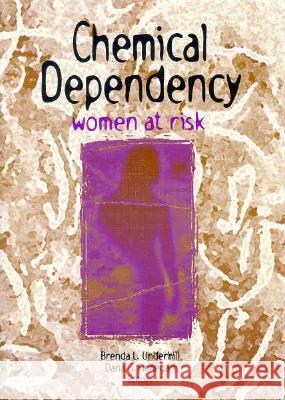Chemical Dependency: Women at Risk » książka
Chemical Dependency: Women at Risk
ISBN-13: 9781560230885 / Angielski / Miękka / 1996 / 179 str.
Chemical Dependency: Women at Risk
ISBN-13: 9781560230885 / Angielski / Miękka / 1996 / 179 str.
(netto: 134,12 VAT: 5%)
Najniższa cena z 30 dni: 139,97
ok. 22 dni roboczych
Dostawa w 2026 r.
Darmowa dostawa!
Chemical Dependency: Women at Risk shows readers how to design and implement drug and alcohol treatment programs that take into account not only gender but also the cultural differences among women. Whether you re a counselor, researcher, or health care provider, this book will show you how to abandon one-size-fits-all'treatment approaches that fail to address the individual needs of women undergoing substance abuse treatment. Instead, you ll learn to recognize and respect cultural and individual differences among women. Use this book as a guide to develop your own innovative multicultural treatment approaches to substance abuse. Chemical Dependency offers a three-stage cultural assessment model that serves as a key starting point for transforming your services into culture-, gender-, and ethnic-sensitive programs. You ll acquire the knowledge and skills necessary to develop recovery services that identify patterns of belief and customs that can assist or hinder women in achieving and maintaining recovery.Readers of Chemical Dependency discover the obstacles to the development of effective women's recovery programs, as well as key service elements of successful recovery programs. In addition, they witness firsthand how to integrate an understanding of women's lives from a multigenerational and life span perspective with consideration of issues such as sexuality, violence and sexual abuse, and codependence and parenting. As a result, professionals in the field at all levels are equipped with the necessary know-how for providing services to underserved women and offering them the assistance they so desperately need to overcome their substance abuse problems.Chemical Dependency provides readers with the most comprehensive analysis to date of marijuana addiction in women with effective methodss for outreach, intervention, treatment, and research. The techniques it offers for establishing discussion frameworks for sexuality and HIV in the context of recovery can be incorporated immediately into existing treatment programs, as can its strategies to assist lesbians and bisexual women in confronting the trauma they suffer as a result of addiction, sexism, and societal homophobia.The book's authors are professionals in the fields of treatment, research, prevention, community organizing, and policymaking. Readers acquire from their collaborative effort an understanding of alcohol and drug addiction as a complex bio-psycho-social-spiritual'disease. Counselors, researchers, health care providers, and faculty and students of chemical dependency programs will find Chemical Dependency an invaluable guidebook for the development or improvement of their own approaches to successful intervention and treatment of women susceptible to drug and alcohol abuse."











